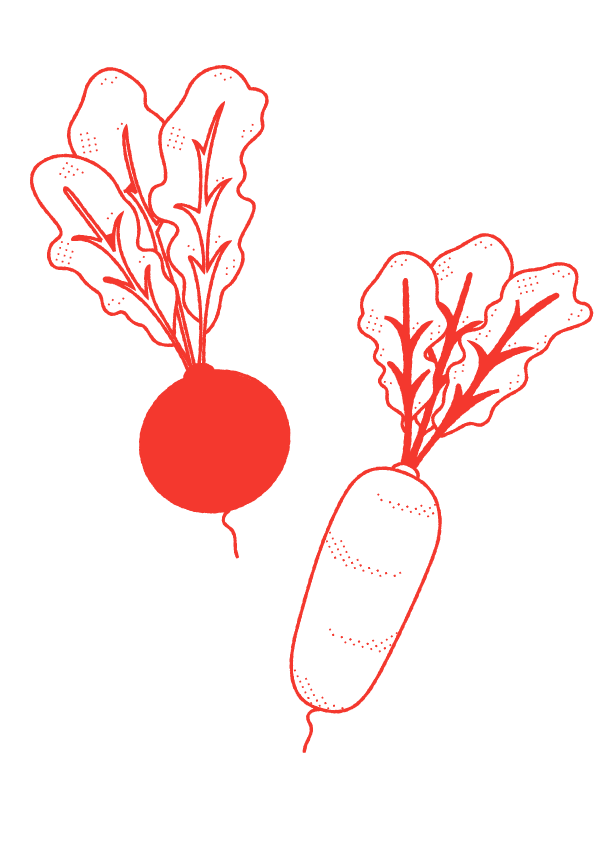Cabbage, Spring Green
“Eat your (spring) greens” never sounded so good.
Spring Green Cabbage is the epitome of vegetable juxtapositions. They can withstand harsh, cold winters as the first cabbage of the year, but pair better with a spring or summer food palette. If maintaining a healthy, eco-friendIy diet is a top priority for you, then you will absolutely love the health benefits that Springs Greens can provide. Unlike round cabbages, they don’t have a hard heart or the same crunch, but feel softer and taste richer. They are a beautiful, deep green colour connected at the root.
Trust me, you’ll love these tender plants not only for their sweet taste but for the incredible amounts of health benefits, boasting rich nutrients such as Vitamin C and Vitamin K. They belong to the brassica family of vegetables which are widely believed to be cancer preventative. These babies are also super cost-effective. You can support your immune system, bank account and the environment: win-win!
Season and Cultivation
As the name suggests, spring greens are at their peak harvest season from April to June. However the cultivation process begins about 8-10 months beforehand, typically in July or August. They are primarily grown in the U.K. and northern Europe.
Spring green cabbage grows best in soil that is a pH of 6-7. This is to ensure clubroot, which thrives in acidic soil, isn’t a problem for the crop. Growing spring greens starts in a bed of soil that is well-consolidated but not overly fertilised. Given that they are hardy cold weather survivors, you don’t want them growing on a soft ground before the onset of the winter. By September, seeds are sown thinly on the surface of a nursery bed or tray and once they reach about 10 cm in height then they are transplanted to their permanent position.
Firm planting and lower temperatures are key during the maintenance process and then they are ready to harvest in mid-late spring while the leaves are immature and the cabbage heart is firm. Harvesting techniques are pretty straight-forward – only needing a sharp knife to cut about 5 cm up from the group or using a fork to lift the whole plant out. Once they are harvested, they should be used straight away because they don’t store well. But the good news is that farmers can re-use the stumps of the first round to start right away on another harvest.
Buying Advice
Without sounding like a broken record, I can’t emphasise the irony of this crop’s name. They really are best found in the spring season. While easily accessible in supermarkets, I recommend going straight to the source and shopping local. Check out nearby farmer’s markets and you’ll find them at their freshest. This is also extremely beneficial for the environment. By shopping more farm-to-table, you are reducing food waste, larger scale food production and transportation: all crucial in lessening our environmental impact.
When you are out buying produce and looking out for spring greens, feel for fresh, firm leaves; the brighter the better. If the leaves look wilted or are slightly darker at the edges, then they aren’t in an optimal state for you to take home. You should expect to pay around £2/kilo for whole heads, which you can eat like that or shred on your own. For storage, it’s best to store it in your fridge and eat as soon as possible; the closer to your purchase date the better.
Cooking Advice
Now, what good would all this information be if I didn’t tell you how to maximise your spring green eating experience? Lucky for you, there are a few ways you can prepare spring greens. Since you most likely bought whole heads, wash them gently then remove the leaves from the centre and shred them in thin, long strips.
Roast them, steam them, fry them – heck, you can even eat them raw. But a popular, quick and easy method for deliciousness is to sweat your spring greens with a little vegan butter in a frying pan, then squeeze lemon to taste after cooking. Season with a dash of salt and pepper if that’s your jam, and voilà – you just got yourself some real green goodness. Just avoid overcooking to avoid a rather unpleasant smell and flavour.
They are truly a chameleon of sorts, matching well with various dishes but also great as a stand-alone snack. So it’s really up to your personal preference! You can add them in stir-fries or in place of savoy cabbage. Try a Soba Linguine with tofu and spring greens or Moroccan Falafels with spring greens and pearl barley.
Conclusion
Essentially, with Spring Greens, you really can’t get enough. They are packed with nutrients, flavour and will instantly brighten up any plate with their vibrant, dark green colour. Enjoy the environmental and health benefits of this hardy cabbage.



